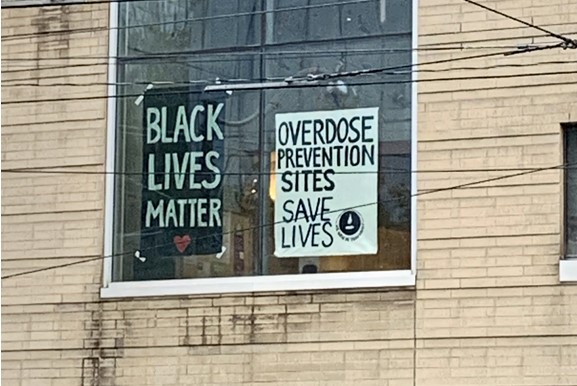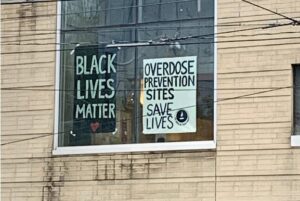Opioid Crisis in a Pandemic
Once, I had a short conversation with a friend who works retail at the Eaton Centre, downtown Toronto. He has varying work shifts. When assigned a closing shift, he observes a resurgence of nocturnal people, mostly behaving oddly, presumably due to drugs. He said, “I am vigilant of the druggies, not the homeless. The latter, they keep to themselves. The former, they harass some pedestrians. I witness some of these. Other times, I’m the object. At the end of the day, I don’t need this. I get harassed already at work. It’s part of the job. That kind of harassment, I can take. But the kind the druggies mete out, scary.” This was pre-pandemic
This pandemic has resulted not only in an increase of mental health problems but also an unbelievable increase in opioid use. The opioid problem was already there to begin with, which explains the existence of safe injection sites and overdose sites, but Covid-19 took front and centre after March 2020. Focus got shifted. Drug use didn’t go away. It stayed and got worse.
The Centre for Addiction and Mental Health (CAMH), which has three locations in Toronto, provides care for people facing addiction. Safe injection sites, one of which is a block east of the Eaton Centre, downtown core, and the overdose prevention site in Toronto provide supervised use of drugs in an effort to reduce drug overdoses, the risk of infections from using the same needles, and the amount of publicly discarded needles. They contribute to the decrease of drug related crime in the local community. The goal of these sites is to manage the addiction in the hope that withdrawal and treatment would follow – a big challenge but achievable.
Opioids are pain relievers but can also induce “feeling high” which makes them attractive to those in need of euphoria. Hence, addictive. They take the form of codeine, fentanyl, morphine, oxycodone, hydromorphine, and medical heroin, which can be prescribed, produced or obtained illegally, according to Canada.ca on substance use and controlled and illegal drugs.
Liam Casey of The Canadian Press reported on May 19, 2021, that opioid overdose deaths increased by 75% in Ontario during the pandemic. Shocking, yet there it is. This was validated by The Star’s report on July 26, 2021. Its own investigation found “new ‘ultra potent’ opioids hitting Toronto streets in recent weeks as overdose deaths mounts”. Illegal labs are creating dangerous and illegal drugs and compounds which are being pushed to users in Toronto because of disruptions in drug supply chains brought about by travel restrictions and border closures.
South of the border, the National Center for Health Statistics reported 93,000 American deaths from drug overdoses between December 2019 and December 2020, equivalent to about 255 deaths a day, according to The Lancet editorial dated July 24, 2021. This info did not go unnoticed by CNN’s Maggie Fox who filed a report on the same issue on July 17, 2021, wherein she stated that drug overdose deaths in the US rose to almost 30% in 2020.
In the Philippines, drug abuse was the rallying cry by the incumbent to get elected in 2016. Counting on his campaign promise to get rid of illegal drug use in six months, he was overwhelmingly elected to sit in the Study Room of Malacanang Palace, the official residence of the Philippine president. Now on his 5th year in office, he still has to fulfill his promise.
In the meantime, 20,000 have been killed extrajudicially, some vigilante style, using drugs as an excuse, according to human rights groups. The Philippine Drug Enforcement Agency gives just about a quarter of this number from its anti-drug campaign. The recent Philippine Olympiad gold medalist Hidilyn Diaz was included in the drug list of 2019, as reported by Rappler, a digital newspaper whose owner is out on bail after a several accusations from the Philippine government. Miss Diaz’ only “crime” which put her on the drug list was soliciting funds for her Olympic bid for which she won gold in Tokyo for her event in weightlifting.
We didn’t keep our eye on the ball, as referred to when focus is moved away from the problem. We got consumed with this virus that has disrupted our lives. And, what has been there just got worse, resulting in overdose deaths. Now, as the Delta variant is threatening to upend our reopening after our third wave here in Ontario, this grim information about opioid deaths is taking hold in our tenuous existence this year.
Photo credit: R. Castellvi, sign of Overdose Prevention Site at the southeast corner of Dundas and Parliament streets, Toronto.




